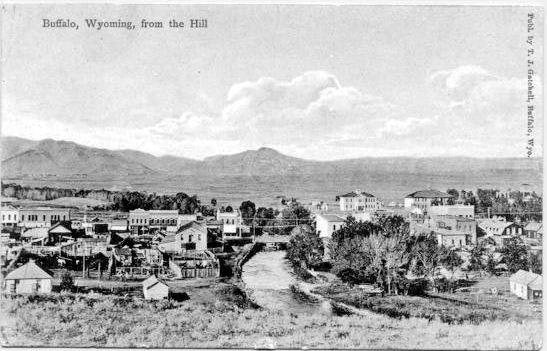
Buffalo, 1909, photo published by T. J. Gatchell
Theodore James "Jim" Gatchell (1872-1954) was a pharmacist in Buffalo, establishing his drugstore
in 1900 after completing his apprenticeship at Edelman's Drug Store in Sheridan. In Buffalo he became
friends with the famed scout Frank Grouard. Grouard taught Gatchell Sioux.
Gatchell became friends with the Sioux who presented him with many artifacts, including
a Winchester rifle used at the Little Bighorn. These items form the basis
of the Jim Gatchell Museum in Buffalo.
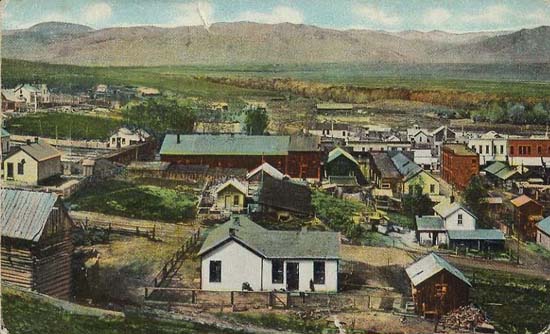
Buffalo, 1910
While the Occidental Hotel takes great pride in Owen Wister's immortalization of its facility, overlooked is
Wister's description of the town in his 1891 journal: "June 17: The town of Buffalo of course, is
something beyond words ... a general litter of paltry wood houses back to side to back at
all angles seem to have been brought and dumped out of a weelbarrow."
Besides Gatchell, other early businessmen who came included
Ed O'Malley who ran an establishment known as the "Six Mile Ranch." O'Malley moved his
establishment into Buffalo where he operated under the name of the "Lone Star." The Lone Star
was located about where the Johnson County Courthouse is now located. Another early saloon was the Cow Boy Saloon next door
to the Echo newspaper and printing office.
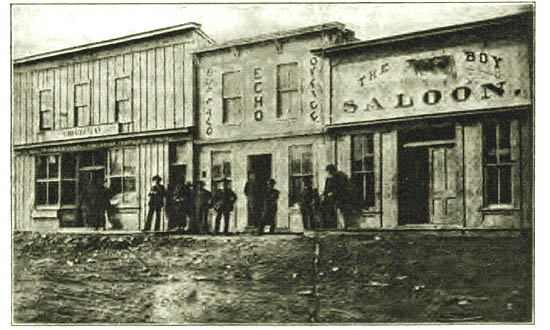
Cow Boy Saloon, 1890's
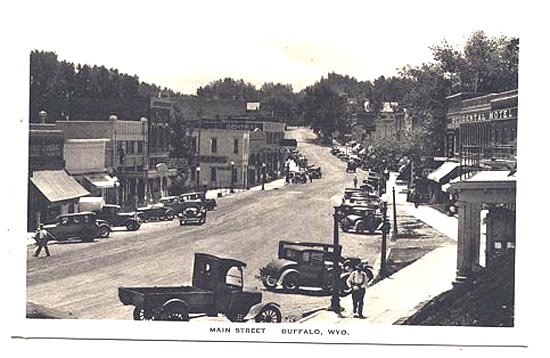
Buffalo, approx. 1930
The Bozeman Trail leading from Ft. Laramie to Virginia City was
regarded as a part of the Great North Trail, a loose collection of trails leading from
New Mexico along the eastern side of the Rockies to Canada. Portions of the
Trail were laid out in the Reynolds Expedition discussed in Photos II. In 1863, John M.
Bozeman, attempted to trace the trail but was turned back by Sioux near present
day Buffalo. The following year four wagon trains went through from Fort Caspar, but in
1865, the Trail was closed but it was again reopened to emigrant use in 1866. The military
crossing was at the present City with the emigrant crossing about a mile
south. Following the Fetterman
fight of July 21, 1866, the trail was again closed to non-military use. [For a linked
map of the Bozeman Trail click here. Use
browser back button to return.]
Nevertheless, some civilians continued to attempt to use the Trail. Bozeman,
himself was killed in the Spring of 1867 in a skirmish with the Blackfeet
near the Yellowstone River in one such attempt.
Following the 1868 Treaty of Fort Laramie the trail was closed to all use until
the 1870's when,
as depicted in the following photos it became an important route into
Powder River Country from the South.
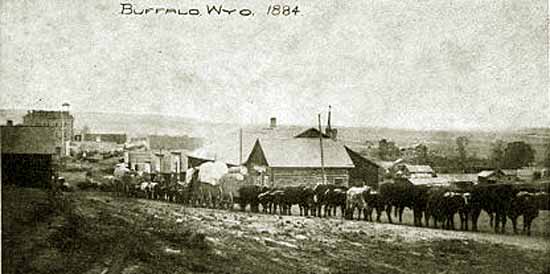
Freight Train, Buffalo, Wyo. 1884. Note use of tandem wagons.
As discussed with regard to the Indian Wars, in 1866, Ft. Phil Kearney was established 225 miles from Ft. Laramie, at the
Piney Tributary of the Powder River. Almost immedately it came under seige by the
Sioux under the leadership of Makhipiya Luta, Red Cloud, and remained so
all Summer and Fall. On December 26, 1866, a wood train came under attack only
six miles out from the fort. Capt. Wm. J. Fetterman, Brevet Lt. Col. during the
Civil War, boasting that with 80 men he could go through the entire Sioux Nation,
volunteered to lead a relief unit. Disobeying Col. Carrington's orders, he
allowed himself to be lured across Lodge Trail Ridge where his entire unit of
80 men were ambushed and killed along with two civilians who went
along to test
two new Henry repeating rifles. The infantry were equipped with inferior
muzzle-loading Springfields and the cavalry with Spenser carbines.
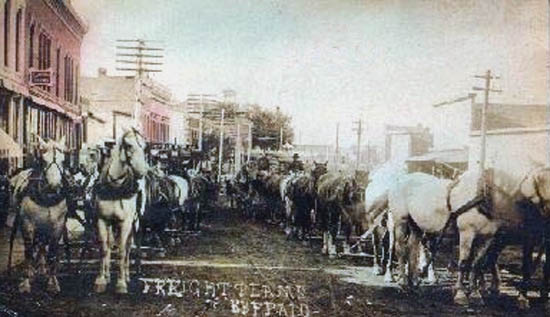
Freight Train, Buffalo, early 1900's
It has been alleged that the reason the road through
Buffalo has a bend in it relates to Conrad's store noted on the previous page.
The store was originally off the beaten path so to speak. Freight for Fort
McKinney was handled by George Washbaugh. John Conrad supposedly offered
Washbaugh a new suit of clothes if he would run his bull trains past the store. Thus,
Main Street has a bend in it. Note the addition of telephone and electric
lines. Compare this photo with ones above and the newer scenes of Buffalo below. Early electric companies in many
areas were an outgrowth of other businesses which had to generate electricity for
their own use. Thus, in some areas the first electric companies may have been an
ice plant or a street railway. As indicated by the next photo, in Buffalo electricity
was provided by the milling company.
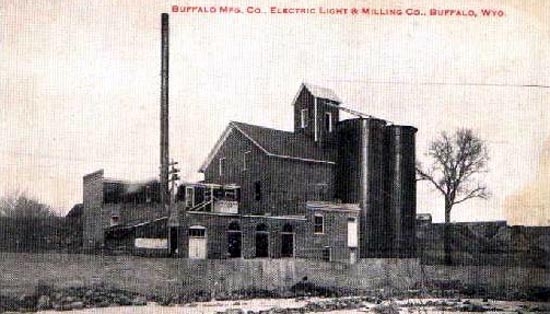
Milling and Electric Company, undated
The electric plant, milling company and water works were constructed in 1886 by George W. T. Beck.
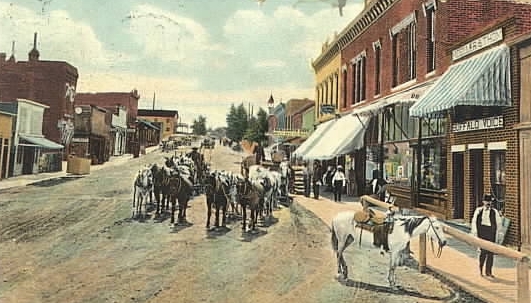
Buffalo, 1910
The offices with the striped awning are those of the Buffalo Voice newspaper. The paper
changed its name in 1925 to the News and in 1926 merged with The
Bulletin.
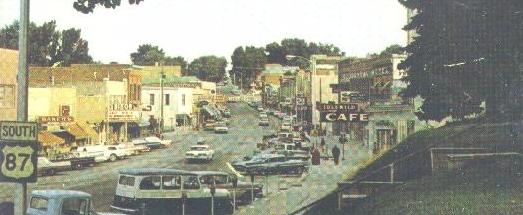
Buffalo, 1960's. Compare with 1900 photo above, left.
While in most areas, the Bozeman Trail is not very visible,
traces may be seen at Crazy Woman Crossing, south of Buffalo.
|